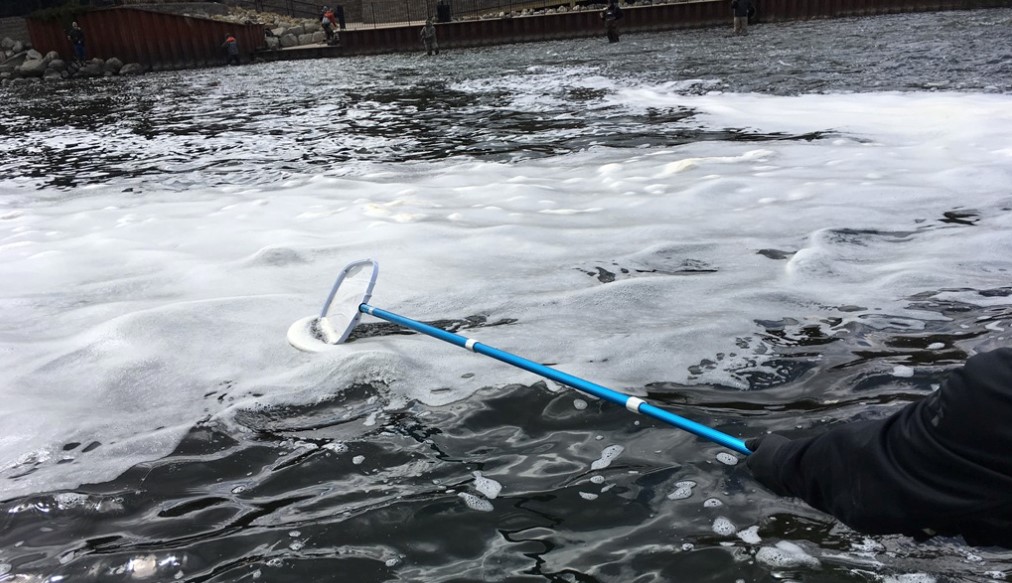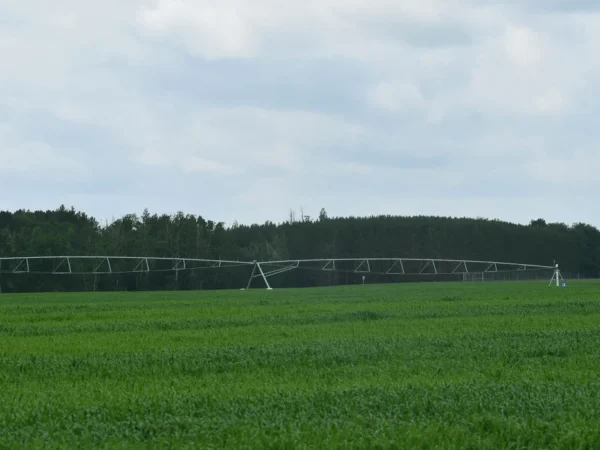
The theater was packed with residents from Pinckney, Michigan, and the nearby communities. Many had pens clutched in their hands as they wrote notes on what was being presented or scribbled down questions they could ask in the Q&A session to follow.
Hundreds of people attended the public forum on PFAS organized by Rep. Elissa Slotkin, representing Michigan’s 8th congressional district, which covers the northern edges of suburban Detroit and extends to the state capitol, Lansing, located mid state. Slotkin, a first-term Democrat, is a member of the bipartisan Congressional PFAS Task Force.
The forum was held at the Jane Tasch Performing Arts Theatre on July 8 and was billed as a chance for people to learn more about PFAS, a family of industrial chemicals that is increasingly being found in drinking water around the state and elsewhere.
Watch Great Lakes Now’s documentary, “The Forever Chemicals” and learn more HERE.
“It’s one of those issues that is extremely grassroots, and it’s because we all care about our way of life,” Slotkin said. “For me, this is all part of reframing how we think about environmental security. I think of it as homeland security. It’s about the safety of our kids and the continuation of our way of life.”
Getting people access to information, encouraging “massive research” on removing the chemicals and starting to understand options for prevention were the broader goals that Slotkin brought up.
PFAS is short for per- and polyfluoroalkyl substances, a group of man-made chemicals that have been flagged as a major contaminant in sources of water across the country. There are around 5,000 such chemicals in circulation, and they’ve been found in the drinking water of several communities in Michigan.
Slotkin gathered a panel of guests from the Michigan Department of Environment, Great Lakes, and Energy (formerly DEQ) as well as local representatives from the Huron River Watershed Council and Livingston County Health Department to brief attendees on the PFAS situation and answer questions.
If you have a question about PFAS, ask it HERE.
On June 27, the Michigan PFAS Action Response Team (MPART)’s Science Advisory Workgroup released a series of “health-based values” for drinking water for seven PFAS, one of its first steps in developing regulatory drinking water standards for PFAS as directed by Michigan Gov. Gretchen Whitmer.
The EPA currently has health advisories of 70 parts per trillion for two of the chemicals—PFOA and PFOS. The MPART health-based values put PFOA at 8 ppt and PFOS at 16 ppt.
While the workgroup recommended values for those seven PFAS, it also recommended MPART and water supply operators work to reduce contamination from other long-chain PFAS when found at levels above 6 ppt.
“That’s the first step, to say ‘What’s your goal?’” said Steve Sliver, MPART executive director. “Now we have to put the engineers, the scientists, all the folks that run these sorts of systems together and say ‘Okay, what can we achieve?’ So right now there’s no change in what’s enforceable.”
October 1 is MPART’s deadline for having a draft set of rules for a new legal threshold limit on the amount of PFAS allowed in public water systems. April 2020 is the deadline for adopting the new rules.
The new drinking water standards aren’t the only action being taken with regards to PFAS.
On a federal level, legislation prohibiting the military from using firefighting foam made with PFAS after 2029 was included in the House Armed Services Committee’s proposed fiscal 2020 National Defense Authorization Act. A provision championed by Slotkin prohibits use of the foam in training exercises.
Part of the reason for the 10-year leeway is that there is no suitable replacement for the firefighting foam with PFAS, Slotkin said, though Slotkin has pushed for an amendment that would give a shorter deadline anyway.
The Michigan Department of Health and Human Services has applied for a couple grants as well to monitor the effects of PFAS on the body, according to Deb MacKenzie-Taylor, toxicology specialist with the department.
The grants would be used to separately look at firefighters and adults across Michigan “who are not expected to be exposed” to see if they match national levels of PFAS in their blood.
“We are also going to start an exposure assessment near Parchment, (Michigan),” MacKenzie-Taylor said. Parchment is a Southwest Michigan city that experienced high levels of PFAS contamination in its drinking water.
The questions posed to the panel were mostly along the lines of whether specific lakes had been tested yet or how residents could get their private wells tested. Anyone curious can watch Great Lakes Now and MLive’s video for more information on testing for PFAS and what filters do work to remove PFAS.
One attendee asked about whether there is routine testing for PFAS in biosolids happening.
There isn’t, according to one of the panelists, EGLE Environmental Quality Analyst Stephanie Kammer.
“EPA has no criteria for PFAS in biosolids,” Kammer said. “However, it is something that EGLE is looking at.”
“There isn’t a ton of research that’s been done in other states,” she added. “We’re trying to do the research as we go.”
There also is cooperation and sharing of information going on between states.
A Wisconsin delegation is coming to meet with MPART and observe some of what Michigan has done with regards to PFAS, Sliver said, comparing it to Michigan sending a delegation to Minnesota.
“It’s fair to say right now given the leadership climate at the EPA, we are playing defense on environmental issues,” Slotkin said. “I don’t think (the EPA is) doing enough, and we’ve been pressuring them through legislation to do more. If they won’t do it voluntarily, we will force them.”





